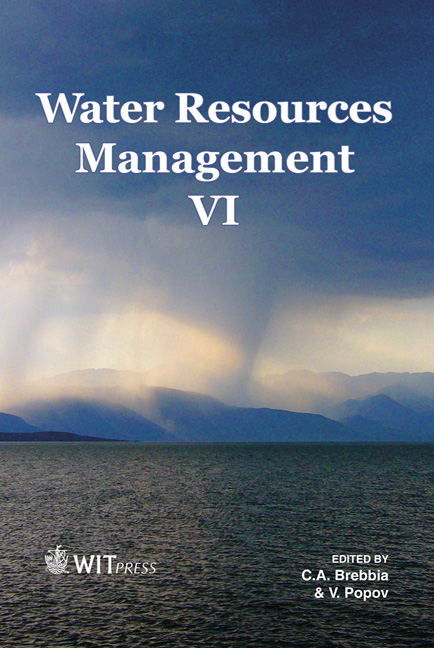Recovery Of Humic Substances From Landfill Leachate Via 2500 Da Ultrafiltration Membrane
Price
Free (open access)
Transaction
Volume
145
Pages
10
Page Range
737 - 746
Published
2011
Size
387 kb
Paper DOI
10.2495/WRM110661
Copyright
WIT Press
Author(s)
D. Yue, B. Han, G. Qi & Y. Cheng
Abstract
Landfill leachate management is getting more and more attention because of its seriously potential environmental impact. Humic substances (HS), which lead to the difficulty of landfill leachate treatment, can also be recovered and used as a fertilizer for soil or remediation agent for contaminated sites. A 2500 Da ultrafiltration membrane was applied to separation of humic substances from salts and heavy metals in landfill leachate in this study. Humic substances recovery ratio was 50-70%. The fractional recovery of HS decreased from up to 100% to about 55% as concentration factor (CF) increased from 2 to 6. Fractional removals of K+, Na+, Mg2+, and Ca2+ were up to 85%, 85%, 89%, and 51%, respectively. Fractional removals of heavy metals were more than 75%, 60%, and 78%, respectively. The 2500 Da UF performed well in separating HS from salts and heavy metals and in concentrating HS. Keywords: landfill leachate, humic substances, ultrafiltration, 2500 Da, separation. 1 Introduction Landfill leachate management is getting more and more attention because of its serious pollution to the environment and the treatment difficulties. Landfill leachate always contains a lot of refractory humic substances (HS), which may be simply classified into humic acid (HA) and fulvic acid (FA), and the HS content increases with landfill age [1–3]. The existence of HS affects significantly negatively the efficiency of biological treatment [4, 5], which is the predominant treatment process of landfill leachate all over the world. In recent years, advanced biological techniques such as the Membrane Bio-reactor (MBR)
Keywords
landfill leachate, humic substances, ultrafiltration, 2500 Da, separation





